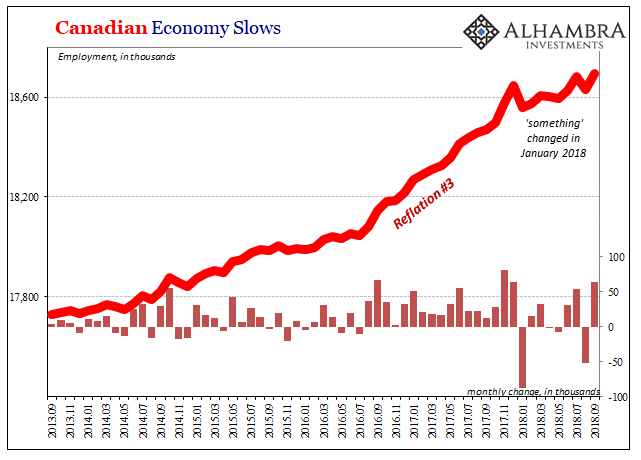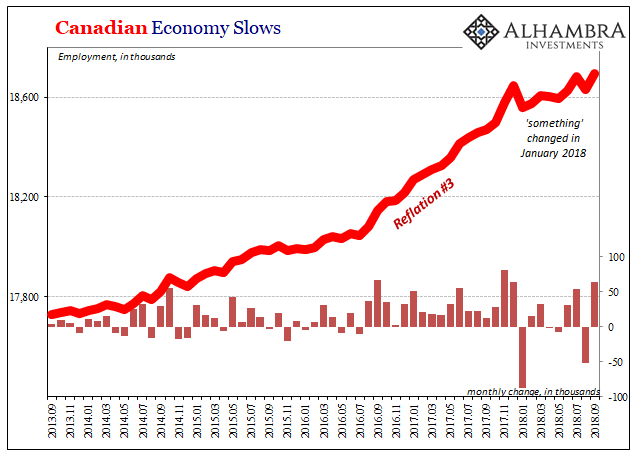The Bank of Canada held its benchmark overnight rate steady at its last meeting in early September. Like the Federal Reserve, Canada’s central bank has been “tightening.” The policy lever had been lifted four times starting in July 2017. It is expected that when monetary officials meet in Ottawa tomorrow they will vote for a fifth.
In recent weeks, though, uncertainty surrounding Canada’s economy has measurably increased. The employment report for the month of August was sharply lower. Though payrolls rebounded in September, there can be no doubt that the outsized gains in 2017 have vanished in 2018.

Therefore, what’s at stake in terms of the Bank of Canada is whether or not they will heed the message, or, as most often central bankers do, just ignore everything in favor of their current views. What it means in the latter case is more than just moving (monetarily) irrelevant benchmarks around.
Three weeks after the last official gathering, Canada’s central bank launched what it has called a major initiative. On September 28, officials introduced The Economy, Plain and Simple. BoC Governor Stephen Poloz explained:
Along with our outstanding Museum and website, the new publication helps Canadians better understand the economy and the Bank’s role. Ultimately, this understanding helps people make more-informed financial decisions and makes our own policies more effective.
It is impossible not to see Milton Friedman’s final warning here. Much of what is done by these central banks in the 21st century is done in his name, and yet Friedman in one of his last interviews recognized the inherent contradiction.
The difficulty of having people understand monetary theory is very simple—the central banks are good at press relations. The central banks hire people and the central banks employ a large fraction of all economists so there is a bias to tell the case—the story—in a way that is favorable to the central banks.












Leave A Comment